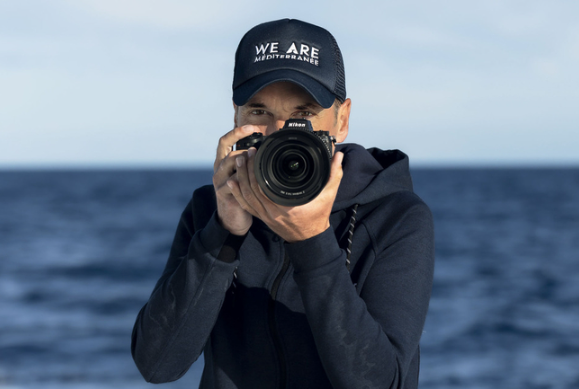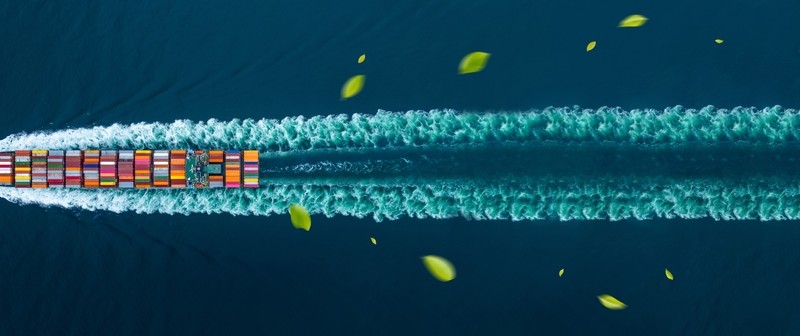World-renowned underwater photographer Greg Lecoeur captures the depths with a unique vision, blending poetry and commitment. His photos, published in National Geographic, GEO, and BBC Wildlife, reveal the fragile beauty of marine ecosystems while raising awareness about the threats they face. From the Mediterranean to Antarctica, through tropical mangroves and the crystal-clear waters of the Pacific, he travels the globe to tell the story of the oceans and their inhabitants. A meeting with a passionate individual whose lens serves the preservation of life.
From childhood dream to calling
Born in Nice, Greg Lecoeur grew up by the Mediterranean Sea and developed an early fascination for the underwater world. With a snorkel and mask firmly fixed on his nose, he explored the seabed from a very young age, intrigued by the diversity of fauna and landscapes he discovered beneath the surface.
But it was an unexpected encounter that marked a decisive turning point in his life.
“One day, while I was out at sea on my small boat, I came across a school of pilot whales off the coast of Nice. They came very close, swimming alongside me for several minutes. It was a suspended moment, an incredible connection with these majestic animals.” Back on land, he shared his adventure with those around him, but his story received little attention.
“Few people knew about this species, even less so in the Mediterranean. That’s when I realized it was necessary to bear witness to these encounters to raise awareness about the unsuspected richness of our sea.”
That’s how he bought his first camera and began capturing underwater wonders. “From the start, my goal was not just to take beautiful pictures but to tell a story, to awaken curiosity and public awareness.”
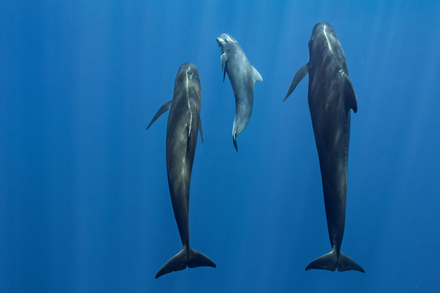
Changing Life to Follow His Passion
At the time, Greg Lecoeur was a business owner. His career path was set, but the call of the ocean grew too strong.
“I wanted to spend more time in nature, explore the world, and fully live my passion for underwater photography.”
He then made a radical decision: to quit everything and embark on a year-long world tour, camera in hand.
“I was also a diving instructor, which allowed me to work in various places and explore seas and oceans in an immersive way.”
Upon his return, he had an impressive portfolio. He began publishing his images in diving-specialized press and quickly expanded his audience.
“In 2016, I was named Nature Photographer of the Year by National Geographic. This award marked a turning point: it legitimized my work and allowed me to fully dedicate myself to photography and environmental awareness.”
Since then, he has continued to embark on expeditions, seeking unprecedented shots and fascinating stories about underwater life.
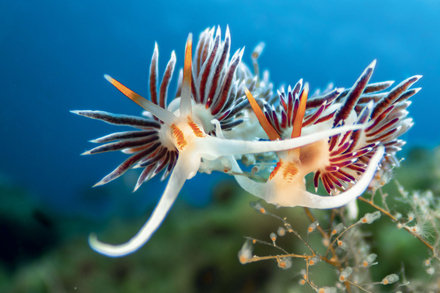
Photographing the Ocean: An Art and a Science
Three elements are essential to capturing a striking image:
Emotion:
“A photo must capture a unique moment, convey a feeling, a sense of wonder. A technically perfect image but devoid of emotion will have no impact.”
Knowledge of species:
“Understanding animal behavior allows you to anticipate their movements and be in the right place at the right time.”
Mastery of the environment:
“Light, currents, water clarity… All these factors influence the final result.”
For Greg Lecoeur, every dive is a new challenge.
“Even if you dive every day in the same spot, you will never see the same scene twice. The ocean is unpredictable, and that’s what makes this job so exciting.”
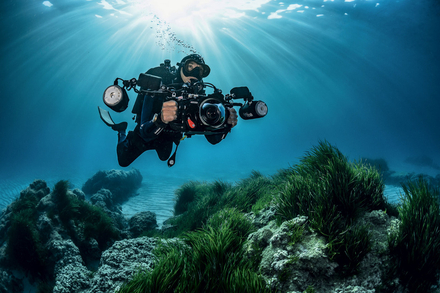
Unforgettable Encounters Underwater
Exploring the oceans also means facing the unexpected. Greg Lecoeur has experienced moments both extraordinary and intimidating.
“One time in Mexico, we were diving with sea lions inside a cave. The young ones were playing with us — it was a magical moment. Then suddenly, they disappeared. A dominant male appeared, reminding us that we were in his territory. We left gently, without any sudden moves.”
Another memorable encounter: a face-to-face with a leopard seal in Antarctica.
“These predators have a fearsome reputation. Yet, one of them approached us with an almost benevolent curiosity. It watched us, played with our equipment. It was a unique moment that challenged all the stereotypes about this species.”
And what about crocodiles?
“Many imagine them as killing machines, but the American crocodile, for example, is more timid than people think. You have to understand their behavior to interact safely.”
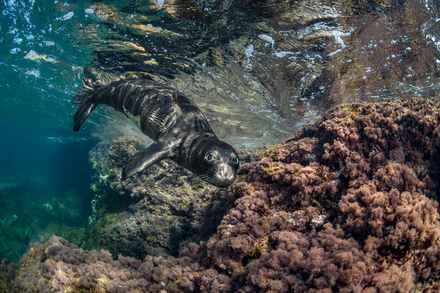
Commitment to the Mediterranean
After exploring the world’s seas, Greg Lecoeur returns to his roots: the Mediterranean.
“It is often seen as a polluted, degraded sea, but it harbors exceptional biodiversity.” To protect it, he founded the association We Are Méditerranée.
“We have revisited the Pelagos Sanctuary, a marine protected area between France, Italy, and Monaco, home to an incredible diversity of species: sperm whales, dolphins, sharks, turtles… Yet few people are aware of it.”
His mission? To inspire love in order to better protect.
“Showing the beauty of the oceans is more powerful than focusing on their destruction. We protect what we love.”
Learn more and support the association: www.wearemediterranee.com
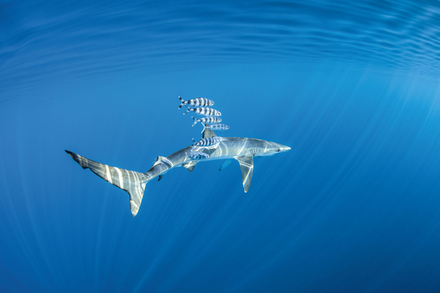
The Future in Images
Greg Lecoeur is multiplying awareness projects: exhibitions, conferences, school presentations.
“Young generations have a key role to play. If they understand the importance of the oceans now, they will want to protect them.” Despite the threats, he remains amazed by the sea.
“Every dive is a discovery. As long as there are stories to tell underwater, I will continue to capture them.”
Greg Lecoeur has compiled his photos in a beautiful book titled Mediterranean: Pelagos Sanctuary, prefaced by H.S.H. Prince Albert II of Monaco, to document the richness of its marine mammals and overall biodiversity. His work, blending science and emotion, highlights the abundant life of this sea—from the offshore cetaceans to the discreet creatures of the seagrass meadows and coral drop-offs. It also bears witness to the threats facing this ecosystem, including pollution, maritime traffic, and climate change. Mediterranean is both an ode to biodiversity and an urgent call for its preservation.
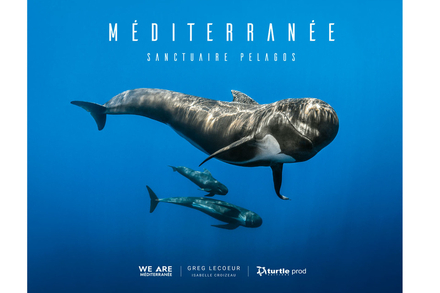
Source: figaronautisme


